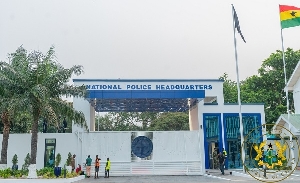For now, nothing appears to be certain other than widespread pressures in the global economy. However, the global prices of crude oil edged higher despite conflicts in the Middle East.
Despite a latest slight drop in crude oil prices, traders remain vigilant about a possible escalation in the Middle Eastern conflict, Commerzbank said in a Friday note.
Brent crude at last look jumped 2.2% to US$89.90 per barrel and West Texas Intermediate crude gained 2.3% to US$85.08 per barrel at last look early Friday.
This comes after reports that the US military struck Iranian targets in Syria, raising concerns of conflict spreading across the region. Iran ramped up its daily oil production by around 500,000 barrels in the first half of the year.
According to the International Energy Agency, that means the country is set to make the second-biggest contribution to the growth in oil production after the US this year. As such, Iran is again accounting for 10% of OPEC output, Commerzbank said.
However, the sanctions, which still remain in place, are making it difficult for Iran to access any new markets besides China. OPEC and allied producers are also sticking to their production targets, which means the oil market will be undersupplied in the final quarter of the year, the bank said.
Next week’s Purchasing Managers’ Indices is set to provide guidance on how demand is developing but is likely to trigger only limited price movements, Commerzbank noted.
The US is the central focus as an unchanged ISM index and a cooling labour market will suggest the economy is weakening. However, the signals are still too vague to indicate a significant demand slowdown, the bank said.
Supply-side shortages remain the focus in oil markets. The ongoing conflict between Palestine and Israel is generating fears of the possibility of a regional spillover, endangering infrastructure damage, and consequently deepening the supply deficit predicted for the rest of the year.
The US military launched airstrikes on two facilities used by Iran’s Islamic Revolutionary Guard Corps and affiliated groups in eastern Syria, Defense Secretary Lloyd Austin said Thursday.
According to the defense chief, ‘these precision self-defense strikes are a response to a series of ongoing and mostly unsuccessful attacks against US personnel in Iraq and Syria by Iranian-backed militia groups that began on Oct. 17.’
Pentagon spokesman Pat Ryder said on Thursday that between October 17 and 26, US and coalition forces have been attacked at least 12 separate times in Iraq and four separate times in Syria.
Ryder, not providing names for the groups that are responsible for these attacks, said ‘We know that these groups are affiliated with Iran.’
He also confirmed that ‘approximately 900 troops have subsequently deployed or are in the process of deploying’ to the Middle East.
Business News of Saturday, 28 October 2023
Source: dmarketforces.com

















